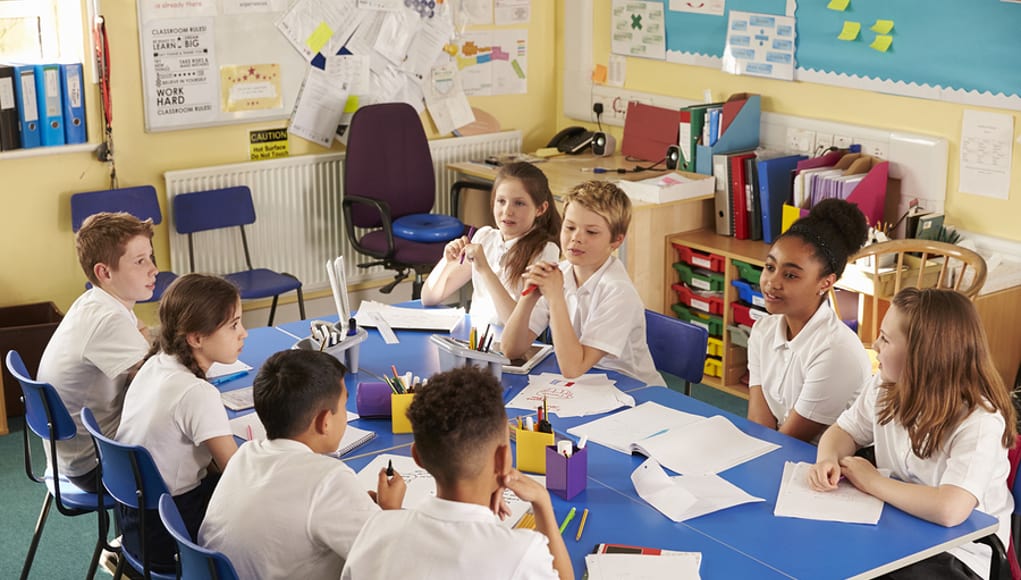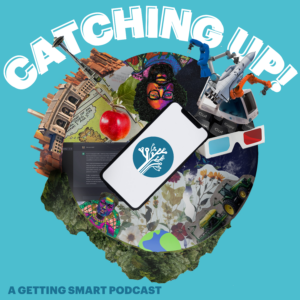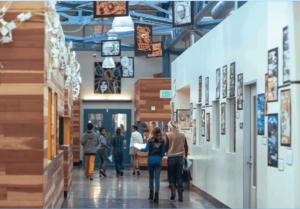What Parents Need to Know About Project-Based Learning

As a parent, you’ve probably heard the buzz about “project-based learning,” but you might not know exactly what it means. Or, more significantly, why you should care about it when it comes to your child’s education. You were your child’s first and most important teacher in life. So what is all this project-based learning hype about and why are so many schools starting to implement it?
Project-based learning (PBL) is a practice that takes a learning-by-doing approach wherein students are active participants in their own educational development. In a PBL classroom, you often find students solving problems, participating in simulations, conducting case studies and designing research projects based on different areas of inquiry. This method encourages students to investigate real world issues and develop practical solutions in order to inspire change at the local and global levels. Strong PBL practice requires a multidisciplinary approach, where educators collaborate to support differentiated skill building and sustained inquiry, further developing individual student voice and choice. “If traditional education is classical, PBL is jazz.”
21st-century educationalists champion this method mainly because it cultivates the curiosity of students. And why is that important? For starters, psychologists have found that “curious people report finding a greater sense of meaning in life.” Secondly, research shows that curious, intrinsically-motivated students become deep learners who master complex subjects, and who develop a sense of “fascination with the subject, a sense of its relevance to life and the world, a sense of accomplishment in mastering it, and a sense of calling to it.”
Sounds ideal, right? While child-centered learning was first supported in the 70s by Jean Piaget and reinforced by other renowned educators such as Howard Gardner, schools have been slow to apply this method on a large scale. Why has it taken so long for schools to come around to this idea? Because PBL is difficult to implement, and even more difficult to implement well. PBL requires a total transformation of the traditional classroom, and it takes a village to rethink traditional learning models of the past. Big reforms often require big risks, and often times these risks morph into misconceptions.
Since project-based learning isn’t quite yet the standard in every classroom, many misconceptions about the practice still abound. Below we’ve listed some of the more popular misconceptions that parents still harbor, as well as why we feel these misconceptions could actually be viewed as merits, rather than detractors, of PBL.
My child won’t learn as much as they would in a traditional classroom
One of the biggest misconceptions regarding project-based learning is that schools that implement it fail to cover core subject material for particular courses. And to some extent, yes, many PBL-based schools do sacrifice “core” traditional content coverage so that students can spend time engaging in applied, investigative learning.
But the sacrifice is worth it. Study after study show that passively learning content in a rote manner no longer proves sufficient to prepare students for success in today’s world, especially now that subject content is accessible via one quick click on the web; however, research shows that PBL helps equip students to troubleshoot in the “real world,” and will help develop fundamental skills “for living in a knowledge-based, highly technological society.”
While most would agree that the way we access information changes our educational landscape, some still question whether PBL will adequately “test” students. It is true that PBL is the antithesis to standardized testing, but that is because PBL classrooms support scaffolding and aims for students to reach different levels of mastery for each project they undertake. As project work is typically presented to an audience consisting of community members, including local experts who may have contributed to their learning, students become stakeholders in their own achievement, and are self-motivated to produce products of meaning. So where does the teacher stand in all of this?
Teachers won’t teach actual content.
Another misconception of PBL is that teachers will not adequately cover content or “teach,” and they don’t — not standing in the front of the classroom, at least. Since a PBL classroom looks vastly different than a lecture-driven classroom, they teach everywhere but the front of the classroom. Serving as an active participant rather than the sole instructor, teachers who practice project-based learning continually rotate around the classroom, offering constructive advice as students lead their own investigations and learning.
With fluid and ever-changing project content, educators actually become the most critical resource to the student. The educator must help all students to develop a reliable research question, oversee design-cycle thinking, guide students toward relevant physical and digital resources, provide critical and constructive feedback, and assess student level of mastery in building skills and understanding complex content. In presenting, students become teachers themselves. The old adage, “Tell me and I forget. Teach me and I remember. Involve me and I learn,” is pretty much PBL philosophy in a nutshell. The teacher becomes a conductor of sorts, directing, inspiring, involving, and fostering self-learners for the future.
My child won’t be prepared for university or for the future.
Unlike their grandparents, the chances of your child holding the same job at the same company for their entire adult life are practically nil, and uncertainty and change are the only predictable factors of the future.
Irrespective of the direction technology leads us, futurists and neuroscientists believe that because of AI, a student’s need to memorize “core content” will be futile. Instead, the top skill sets for the future require agency, adaptability, problem-solving, teamwork and communication– all prominent features of PBL. Educational technology is another integral part of PBL, and this integration allows students to work with the very tools of the future while digital access sets the stage for cross-cultural examination and communication.
One area in which PBL students possess a competitive edge in the college application process over traditional applicants lies in the inherent strength of their digital portfolios. With the focus of learning centered around the completion of projects, graduates of schools that practice PBL leave equipped with a robust portfolio of real-world products documenting their ability to face big challenges and come up with big solutions. The conclusions of these projects showcase the student’s ability to solve real-world problems, and the experience of presenting their results in front of their peers and experts will prove invaluable during the interview process — both excellent skills for any student to possess as they transition into the world of secondary education.
So, are universities on board with all of this? PBL is making headway in universities as more and more are realizing that… it simply works. The bitter truth is that international universities are dissimilar in their admissions requirements, and traditional exams, SAT, ACT, IB, AP, are still typically required for entrance. Some parents question whether universities will even be relevant for their child in the future, while others believe AI will take over teaching altogether. Regardless, if you can’t beat it, meet it. Most PBL schools (like THINK Global School, where I am a teacher) still offer exam and/or external program support to accommodate students whose aim is to attend one of the aforementioned universities with more stringent admissions requirements.
To PBL or not to PBL?
So, is it worth the risk? While sailing the partially-uncharted waters of PBL, don’t be afraid to let your child dive in. Embrace the sometimes chaotic yet always erratically beautiful jazz in the air. Jean Piaget once said, “Education, for most people, means trying to lead the child to resemble the typical adult of his society… but for me and no one else, education means making creators… You have to make inventors, innovators–not conformists.” As parents, it’s time for us to get on Piaget’s page and aspire to make our children creators–their future depends on it.
For more, see:
- It’s a Project-Based World. Let’s Prepare Students for It
- Getting Students Ready for the Gig Economy
- The Purposes of High-Quality PBL
Stay in-the-know with all things EdTech and innovations in learning by signing up to receive the weekly Smart Update.







John Larmer
Good post! A recent grad of Columbia University told a great story (http://www.bie.org/blog/how_my_project_based_school_prepared_me_for_columbia) of how her PBL school prepared her for success there, compared to her traditionally-taught friends.
I recently wrote a short booklet (http://www.bie.org/blog/new_booklet_for_parents_school_communities_to_build_understanding_support_f) for parents and community members, explaining the what & why of PBL and answering many FAQs. Another big one is parents of high achievers who think their child will have to do all the work in a team, or be given a "group grade" that's lower than they're used to getting.
Replies
Tom Vander Ark
Thanks John, great booklet for parents
Sophie Kaul
A wonderful article indeed! PBL is something which must be implemented in each school for the skill enhancement of students. Active learning is getting so popular these days as it not only stimulates the pattern of thinking but also enables children to take decisions. Nothing is more beautiful than your child becoming a "Curious" than a bookworm. Knowledge is something which can be limited but Curiosity leads to imagination and Imagination leads to a better world, which automatically gives your child a reason to live life and do good for others, which at the end lead to breakthroughs. That's how a genius is made and if you want your child to be one - Give him the freedom to learn and become curious.
Gaby
"child-centered learning was first supported in the 70s by Jean Piaget".....I believe it was the very prominent educator, Maria Montessori, who first came came up with the idea of a child centered environment. :)
Yunasi
PBLis great method that will improve learning process . Thanks for sharing update on this